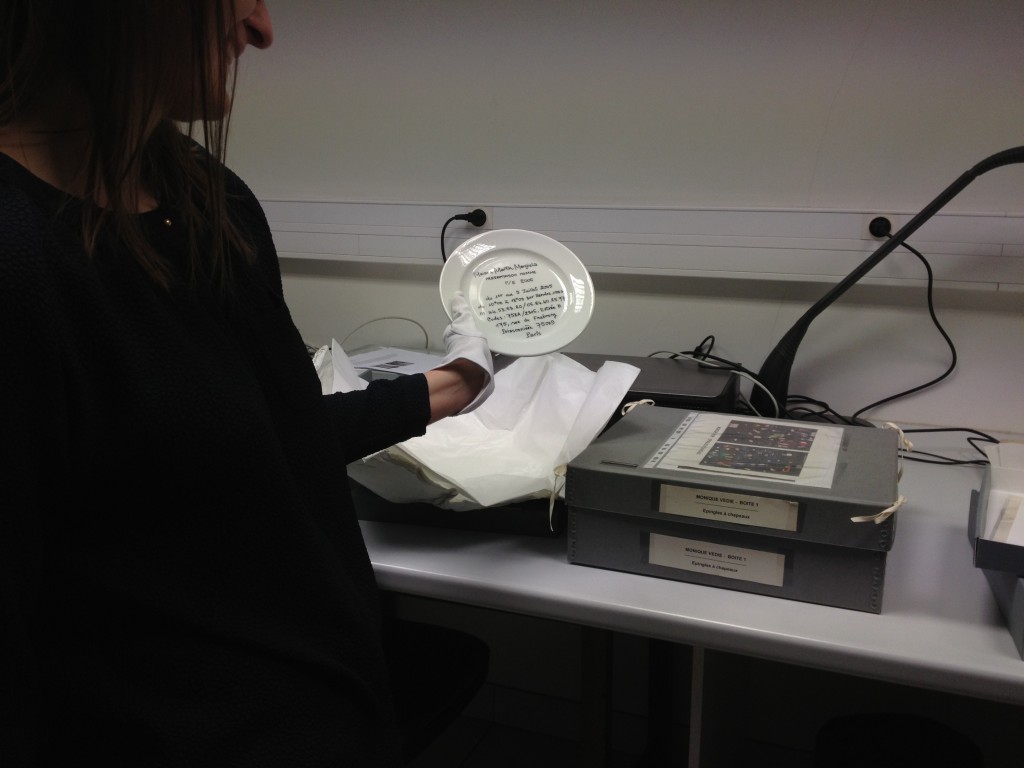History of Design PhD student Denise Gonyo reports back from India, where she presented her research at a ground-breaking conference.
It was an honour to be part of the Design History Society’s first-ever conference held outside of Europe, ‘Towards Global Histories of Design: Postcolonial Perspectives’, held at the National Institute of Design in Ahmedabad, India, 5-8 September 2013. I was able to attend by receiving the competitive Design History Society bursary and generous support from the School of Humanities. Tanishka Kachru and Suchitra Balasubrahmanyan, the conference organisers, provided a fantastic and historic experience for all who participated.
Everyone was buzzing when we awoke on the first day of papers to find that the conference was featured in the Times of India. Proceedings began with a keynote speech from Sujata Keshavan, the first Indian woman to receive a postgraduate degree in design and founder of the most influential design firm in India, Ray + Keshavan. Sujata’s talk traced her experiences of modern design in terms of economic, social, and political contexts from Independence to the present day.
There was a strong University of Brighton contingent at the conference. I was part of a panel entitled ‘Exhibiting South Asia’, which featured papers from myself and University of Brighton lecturers in the History of Art and Design, Claire Wintle, Megha Rajguru, and Nicola Ashmore. I was thrilled when one of my academic heroes, Tapati Guha-Thakurta, attended our panel and provided us with fantastic feedback we can use to further our research. In another panel, Brighton MA student Pallavi Patke offered fascinating insight into the European adaptation of Indian embroideries in the late nineteenth century. Tom Wilson, a collaborative doctoral student based at Brighton and the Design Museum (and British Council Curator-in-Residence at the NID) installed a fascinating exhibition trail through the school entitled ‘NID Traces’. Tom’s paper on the Commonwealth Institute was well-attended and insightful, especially as the Institute will be the new home of the British Design Museum in 2014. Annebella Pollen and Cheryl Buckley, faculty in the History of Art and Design at Brighton and executive committee members of the Design History Society, chaired sessions on Postcolonial Textiles, Cultural Colonialism, and Fashion and National Identity. Megha and Nicola also staged a public sewing event from their ‘Remaking Picasso’s Guernica’ project.

Denise Gonyo at the National Institute of Design, Ahmedabad. Spiral staircase reclaimed from Victorian calico mill.
Fascinating papers were given on a wide range of topics over the three days of the conference. Professor Alison Clarke, Director of the Victor Papanek Foundation at the University of Applied Arts in Vienna, spoke on the subject of design for development, focusing on the design reforms of Victor Papanek and the legacy of the Ahmedabad declaration. Sheena Calvert gave a thought-provoking and provocative paper suggesting that the international export of EuroAmerican design education could be understood as a form of re-colonization. Tapati Guha-Thakurta’s passionate keynote speech examined the extraordinary Durga Puja goddess festivals in contemporary Kolkata, exploring concepts of design branding as well as the changing face of artistic identities fostered by these increasingly spectacular events.
Ahmedabad is also home to the Calico Museum of Textiles, a world-class collection of textiles from the Mughal era to the twentieth century. It houses, among other treasures, examples of the extraordinary double ikat or patola textile technique that is unique to Gujarat, where each of the 100,000 threads is dyed separately before weaving into a complex patterned cloth. Nicola, Megha and I travelled a couple of hours outside Ahmedabad to Patan to see these textiles in production, all made by hand. Weavers told us the waiting list for one of their pieces is anywhere from 18 months to 4 years. I was directed to a photograph of the weavers meeting former US Secretary of State Colin Powell, presumably because I’m American, although I was more excited to see a photograph of the famous Bollywood actor Amitabh Bachchan paying a visit.
We have a definite cluster of scholarship on India in our department at Brighton, with at least five academics all working on different periods and topics. It was amazing to be part of such a historic conference and to witness first-hand the NID students who are the new vanguard of design in India, and to see how our university played a role in bringing this forward.





